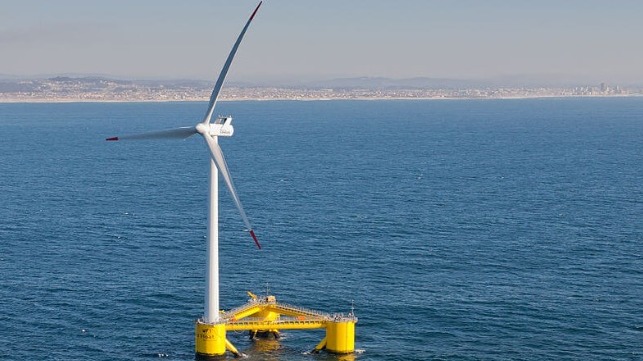Are Floating Offshore Wind Turbines "Vessels" Under Maritime Law?

Offshore wind energy is an essential tool in the transition towards 100 percent renewable energy in the United States. The U.S. government has committed itself to promoting offshore wind projects (OSW) in the hopes of having 30 gigawatts (GW) of offshore wind energy generating capacity installed by 2030 and 110GW of offshore wind energy generating capacity by 2050. To put this into context, total global offshore wind energy generating capacity was roughly 32GW at the end of 2020. These ambitious goals will require an increase in offshore wind projects.
Current ongoing offshore wind projects are being planned and developed in locations with shallower water depths (20-50m) on the East Coast. While there are many reasons for developers to begin offshore development in these areas, one reason is that fixed-bottom foundations, which are the most proven foundation technology, are often seen as best suited for shallower water depths. However, in order to accommodate the projected uptick in offshore wind development, projects will need to be constructed in locations with deeper water depths (i.e, the West Coast and the Gulf of Maine). One way that developers plan on fully utilizing these deeper water depths is by relying on floating foundations. While still in the early stages of development, floating offshore offers the potential of accessing wind energy resources previously thought to be inaccessible.
From a legal perspective, one open question regarding a floating wind turbine is whether such a structure is a “vessel” under applicable maritime law and whether it is necessary or even possible to be registered as such. As an analogy, a mobile offshore drilling unit (used in the exploration of oil and gas) is registered and regulated as a vessel in various jurisdictions, even though it is not a mode of transportation and thereby would not be considered a vessel in the traditional sense of the word. It appears that at least one classification society is able to “class” floating wind turbines, which in turn has allowed some vessel flag jurisdictions (including the Republic of the Marshall Islands and Norway) to register them.
The implications of a structure being characterized as a vessel are numerous, including regulatory, environmental and tax law implications. However, perhaps one notable and significant consequence is that in connection with the financing of such a structure, a vessel mortgage may be recorded to perfect the financier’s security interest. Depending on the structure of the financing, a vessel mortgage would provide better clarity in the perfection status of the financier’s security interest than, for example, a UCC financing statement which is generally used to perfect a security interest in equipment. It would be anticipated that clarity in the financier’s security interest may lead to additional financing alternatives for the construction of the offshore mobile units (and other offshore wind structures).
As the technology and specifications of floating wind turbines are further refined, and the industry evolves and matures, market practice will develop, but it is encouraging to see that industry participants and flag registries have already taken the necessary steps to provide for a framework where floating wind turbines could be mortgaged in a way that is familiar to the financier.
The West Coast is an important and necessary location to increase U.S. offshore wind capacity. While an evolving technology, the floating mobile turbine may be an essential tool to overcome the challenges surrounding the West Coast geography. The project sponsors and other involved parties will need to monitor the technological and legal developments to ensure success of the projects.
 Keith Billotti is a partner in and co-head of Seward & Kissel’s Capital Markets Group. His practice involves all aspects of corporate and U.S. securities law for domestic and foreign clients primarily in the shipping, offshore drilling and hedge fund industries. Keith regularly represents large established public shipping and offshore drilling companies.
Keith Billotti is a partner in and co-head of Seward & Kissel’s Capital Markets Group. His practice involves all aspects of corporate and U.S. securities law for domestic and foreign clients primarily in the shipping, offshore drilling and hedge fund industries. Keith regularly represents large established public shipping and offshore drilling companies.
 Hoyoon Nam is a partner in the Corporate Finance Group at Seward & Kissel. He primarily devotes his time to the representation of financial institutions and borrowers in connection with bank financing and restructuring transactions with a particular focus on matters of interest to clients in the transportation industry.
Hoyoon Nam is a partner in the Corporate Finance Group at Seward & Kissel. He primarily devotes his time to the representation of financial institutions and borrowers in connection with bank financing and restructuring transactions with a particular focus on matters of interest to clients in the transportation industry.
This post is sponsored by Seward & Kissel LLP.
Top image: Floating offshore wind prototype (Untrakdrover / CC BY SA 3.0)
The opinions expressed herein are the author's and not necessarily those of The Maritime Executive.
